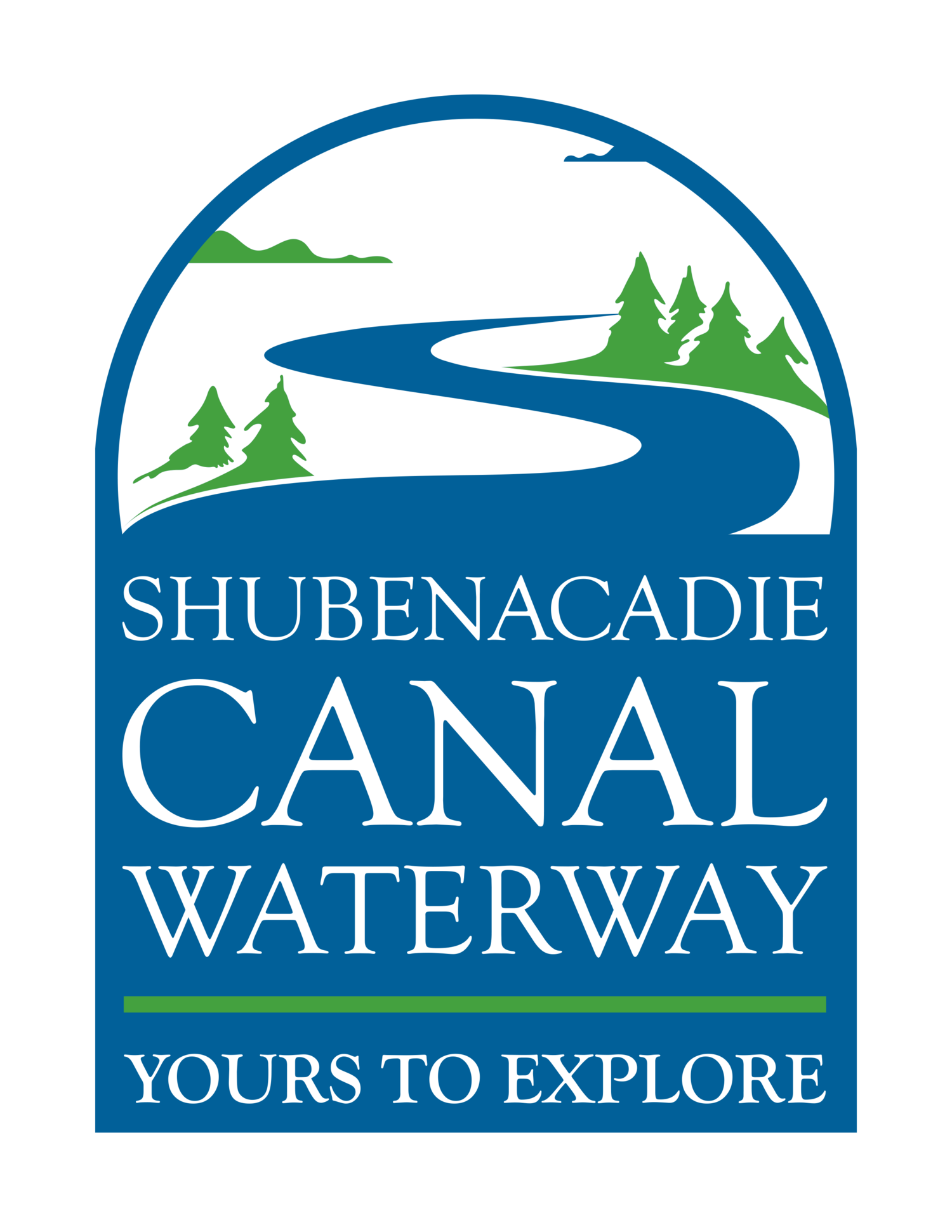What Is a Canal?
In the years before the railway and the automobile, boats were the most common and efficient way to carry cargo and passengers from one place to another. Of course, boats can only run on water, and not all places have ready access to a natural lake or river.
Canals are artificial waterways that are created to connect places that were previously not connected by water. They may be used to carry goods and passengers inland from the ocean, or to connect two bodies of water that were previously separated. The Shubenacadie Canal served both of these purposes, linking Halifax and the Bay of Fundy and also serving various inland communities along its route.
What is a lock?
Changes in elevation can cause significant problems for boats trying to cross a waterway. Water flowing downhill creates rapids or even waterfalls, and can make the depth of the waterway unpredictable.
The canal lock is a solution to this problem, allowing people to artificially control water levels along hills and other inclines or to bypass difficult sections of a waterway. A lock is a short, confined, and watertight chamber with gates on either end. Using these gates and valves known as sluices, the water level inside a lock can be raised or lowered manually. Before a boat enters a lock, the water level is changed to match where the boat is coming from. Once the boat is inside the lock, the gate is closed behind it, and the water level is adjusted again to match its destination. In both cases, the boat is able to sail through the change in elevation as easily as it would sail across the flat surface of a lake.
While the basic concept of a canal is thousands of years old, the first modern canal locks were built in China around the year 984 CE. Leonardo da Vinci improved the design in the late 15th century with the invention of the mitre gate, an arrangement where two gates close to form a V-shape. The mitre gate is held closed by the pressure of the water trapped in a lock, and can only be opened when the water level is equalized. This basic design can still be found in most canals and waterways today.
If you would like a free interactive demonstration of how canal locks work, visit the Fairbanks Centre at Shubie Park in Dartmouth, which features a working scale model with two locks.
This animated video by Shubenacadie Canal volunteer Warwick Lambert demonstrates how the Dartmouth marine railway worked.
What Is a Marine Railway?
In addition to nine locks, the Shubenacadie Canal featured two marine railways. These systems, also called inclined planes, offered significant advantages over canal locks, allowing boats to cross larger distances overland in less time.
The first step was to build a railway across an incline connecting two bodies of water, with the rails extending into the water at both ends. A boat cradle would then be placed on the rails. By submerging the cradle below the surface, a boat could be floated on top of it and then be pulled out of the water, like loading small watercraft onto a trailer. The boat would then be carried by the cradle along the rails until it was deposited back into the water at the other end.
In both marine railways on the Shubenacadie Canal, the cradle was propelled in a similar way to a cable car or a ski lift. A length of cable ran along the entire railway and looped back around on a parallel network of pulleys, eventually connecting with a large cable drum located in the power house. A water-powered turbine in the power house caused the cable drum to turn, pulling the cable in one direction or the other. The boat cradle then hooked into this length of cable, allowing the cradle to be pulled along with the movement of the cable.
The two marine railways on the Shubenacadie Canal were the first ever built as part of a canal in British North America, although they were inspired by previously existing patent slips on the Morris Canal in New Jersey. The decline in popularity of canals from the 1850s onward meant that this technology unfortunately remained relatively limited in its adoption. Most marine railways are very small systems used only to haul boats into a dry dock for maintenance and repairs. On the modern Shubenacadie Canal, the Dartmouth marine railway has been fully reconstructed, but it is not functional. The only operating marine railway on any canal in North America as of 2019 is the Big Chute Marine Railway in Georgian Bay, Ontario, which forms part of the Trent-Severn Waterway.

